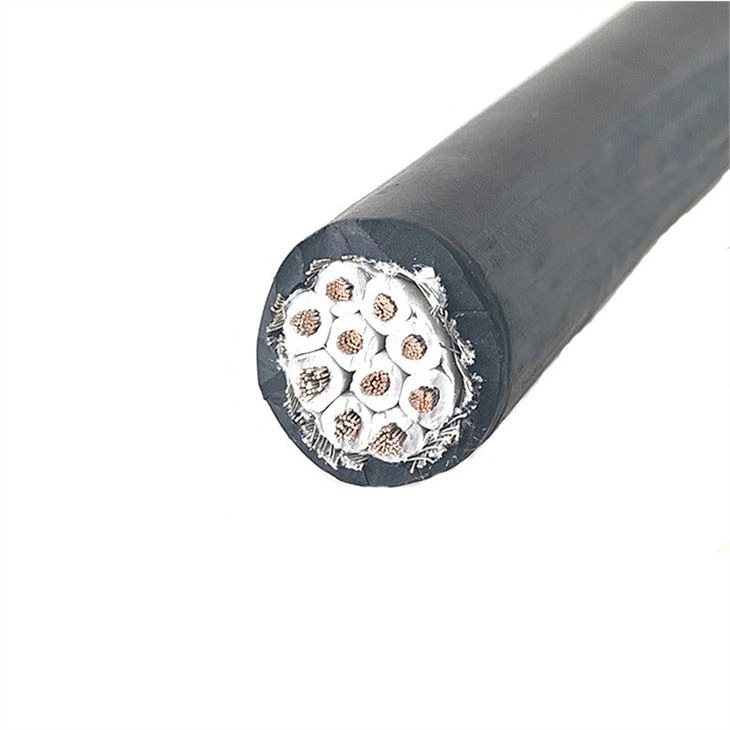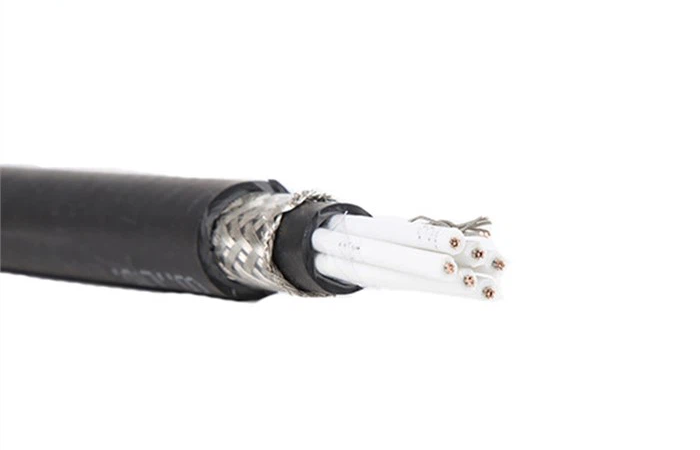

-

Nanyang Cable Group's website
Please choose to visit Nanyang Cable Group's website or other language versions of the website: Shanghai Nanyang Cable Co., Ltd.
-

Release time:2023-11-29 16:01:00 Author:
With the increasing emphasis on the importance of cable fire protection, the manufacturing price difference between flame-retardant cables and fire-resistant cables and ordinary cables is increasingly narrowing. These two types of cables are becoming more and more widely used in water conservancy and hydropower projects. Nanyang Cable introduces the concepts, structures, characteristics and classifications of flame-retardant and fire-resistant cables to provide designers with a basis for correct selection.
The main performance differences between flame retardant cables and fire-resistant cables:

Main Uses of Flame Retardant Cables
It is widely used in large buildings, tunnels, petrochemical industries, power stations, mines and other places where fire protection is required. When a fire occurs, it can prevent the fire from spreading on the cable, avoid the expansion of the fire accident and reduce losses.
Usage characteristics: The long-term allowable operating temperature of cables (wires) is consistent with the ordinary products of the corresponding standard models. A comprehensive and correct understanding of flame-retardant and fire-resistant cables is the first condition for their correct selection.
1. Flame retardant cable
Flame-retardant cables refer to cables that: under specified test conditions, the sample is burned, and after the test fire source is removed, the flame spreads only within a limited range, and the residual flame or residual burn can self-extinguish within a limited time. Its basic characteristics are: it may be burned out and unable to operate in case of fire, but it can prevent the spread of fire. In layman's terms, in the event of a fire in a cable, it can limit the combustion to a local area without spreading, protect various other equipment, and avoid greater losses. The structural characteristics of flame-retardant cables: The structure of flame-retardant cables is different from ordinary cables. The cables are basically the same, except that their insulation layer, sheath, outer sheath and auxiliary materials (taping and filling) are all or partially made of flame retardant materials.
2. Issues to pay attention to when choosing
Designers should design, select and lay out flame-retardant cables based on their specific characteristics, and should pay attention to the following issues;
1) Since halogen-containing flame-retardant cables (including flame-retardant cables, low-halogen and low-smoke flame-retardant cables) will release corrosive halogen acid gas when burning, which greatly hinders firefighting work, delays fire-fighting time and aggravates the spread of fire, so in Public places with high population density should try to design and use halogen-free, low-smoke and flame-retardant cables. Any kind of flame-retardant cable can be used in work areas with low population density. 2) Flame-retardant cables are divided into three categories: A, B, and C. Among them, category A flame-retardant cables have better performance than category B and C and are also the most expensive. Designers should indicate the category of flame-retardant cables when providing ordering lists.
3) Compared with halogen-containing flame-retardant cables, halogen-free low-smoke flame-retardant cables have the advantages of low corrosion and low smoke, but their electrical and mechanical properties are significantly reduced. Therefore, when laying cables, halogen-free low-smoke flame-retardant cables It should have a larger bending radius than the halogen-containing flame retardant cable.
4) When designing cable laying, it is not suitable to lay non-flame-retardant cables and flame-retardant cables side by side, and it is not suitable to lay flame-retardant cables of different flame-retardant categories side by side.

Main Use of Fire-resistant Cable
Mainly used in high-rise buildings, underground railways, nuclear power plants and important industrial and mining enterprises and fire safety and fire rescue related places, such as emergency power supply to the indoor fire fighting equipment, fire alarm equipment, signal lamps, ventilation and smoke extraction equipment, emergency lifts and other power supply lines.
Characteristics: Fire-resistant cable (wire) is a kind of cable that can keep the line in normal operation for a certain period of time even when it is in a burning situation. The difference between him and the usual flame retardant wires and cables is that in the event of a fire, can still transmit power to facilitate the evacuation of people and rescue of important equipment.
1. Fire-resistant cable
Under the specified test conditions, the specimen is burned in the flame, in a certain period of time can still maintain normal operation performance. Its fundamental characteristic is: cable in the burning conditions can still maintain the line for a period of time of normal operation. In layman's terms, in case of fire, the cable will not burn at once on the circuit is safer. Therefore, the main difference between fire-resistant cables and fire-retardant cables is: fire-resistant cables in the event of fire can maintain a period of normal power supply, while fire-retardant cables do not have this characteristic. This characteristic determines the fire-resistant cable in modern urban and industrial buildings plays an important role, because once the fire occurs, control, monitoring, guidance and alarm systems such as power supply circuits must maintain normal operation. Therefore, the cable is mainly used in the power supply circuit from the emergency power supply to the user's fire-fighting equipment, fire alarm equipment, ventilation and smoke extraction equipment, guide lights, emergency power sockets, emergency lifts and so on. Fire-resistant cable structure features fire-resistant cable structure and ordinary cable is basically the same, the difference is that the conductor of the fire-resistant cable using fire-resistant performance of the copper conductor (copper melting point of 1,083C), and in the conductor and the insulation layer between the increase in the fire-resistant layer. And the fire layer by the multi-layer mica tape wrapped into. Because of different mica tape allowable operating temperature differences, so the key to the cable fire resistance performance is the mica tape
2. Selection of attention according to the specific characteristics of the fire-resistant cable, designers should pay attention to the following issues when designing and selecting: 1) When the fire-resistant cable for cable-intensive cable tunnels, cable mezzanine, or is located near the oil pipeline, oil depot and other flammable places, you should first select the fire-resistant cable A class. In addition to the above and cable configuration of the number of small, can be used Class B fire-resistant cable. 2) Fire-resistant cables are mostly used as an emergency power supply circuit, the requirement of normal operation during a fire. Due to the fire, the ambient temperature rises sharply, in order to ensure the transmission capacity of the line, reduce the voltage drop, for the power supply line is longer and strictly limited to the permissible voltage drop of the circuit, the fire-resistant cable cross-section should be enlarged by at least one step. 3) Fire-resistant cable can not be used as a high-temperature cables. 4) In order to reduce the failure of the cable joints in the fire accident, the number of joints should be reduced as much as possible in the installation in order to ensure that the line can work properly in fire. 5) Fire-resistant cables are used as emergency power supply circuits. work normally. If branch wiring is required, the joints should be fireproof.